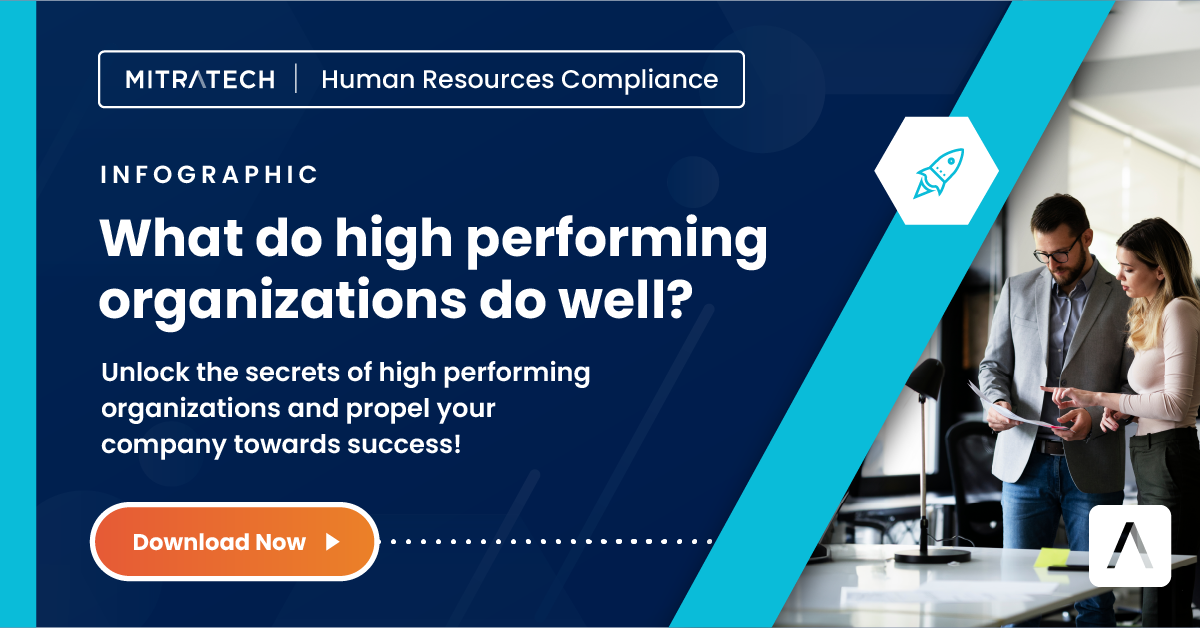How Performance Management Software Supports Organizational Agility
Picture this: a dynamic workplace where teams pivot effortlessly, goals align seamlessly with business priorities, and feedback flows continuously. Employees are happier, healthier, and more engaged.
It’s possible!
The world of agile organizations powered by performance management software is one many organizations have shifted to – and it has benefited them immensely. This blog post explores how these innovative tools support organizational agility, driving success in the modern workplace.
What defines an agile organization?
An agile organization adapts quickly to changing circumstances. They prioritize flexibility and innovation over rigid structures and long-term plans. Truly successful agile organizations thrive in dynamic environments by embracing change as a constant and viewing challenges as opportunities for growth.
Moreover, agility is deeply rooted in collaboration and communication within teams. Cross-functional teams work seamlessly together towards common goals, breaking down silos and fostering a culture of transparency. This allows for faster decision-making processes and promotes creativity through diverse perspectives.
Embracing continuous learning is another hallmark of agile organizations. They encourage experimentation, feedback loops, and reflection on both successes and failures to drive improvement continually. By promoting a growth mindset throughout the organization, agile companies stay ahead of the curve in ever-evolving markets.
What sets agile organizations apart is their capacity to pivot swiftly when needed while maintaining a focus on delivering value to customers efficiently and effectively.
Understanding agile organizations
Agile organizations are like chameleons in business, adapting swiftly to change and thriving amidst uncertainty. They prioritize flexibility, collaboration, and innovation. By aligning goals with strategic priorities, they ensure everyone is moving in the same direction toward success. Investing in coaching skills empowers managers to support their teams effectively through continuous feedback and development conversations.
Team objectives foster a sense of unity and shared responsibility among employees. Transparency in performance targets promotes accountability and clarity within the organization. Differentiating consequences based on values and behaviors encourages intrinsic motivation over monetary rewards.
Leaders play a crucial role in guiding growth and evaluating performance with a focus on agility. Collecting input from multiple sources provides a comprehensive view of individual contributions to team success. Agile organizations embrace change as an opportunity for growth rather than a challenge to overcome.
But how does it all work?
- Investing in the coaching skills of managers is crucial. Effective leadership guides teams and nurtures a culture of growth and innovation. Differentiating consequences based on individual contributions fosters accountability and encourages high performance – resulting in a competitive advantage across your team.
- Introducing team objectives alongside individual targets promotes collaboration and collective achievement. Setting goals as a team allows for frequent discussions and necessary pivots, ensuring alignment with evolving business needs and eliminating silos. (Want to learn more about departmental goals? Click here to read an entire blog post about them!)
- Transparency of targets and performance metrics creates clarity across the organization. Clarifying the roles leaders play in development reinforces a shared understanding of expectations and responsibilities among team members.
An agile business starts with individual leaders and then works to strengthen its teams and departments. From there, the focus can shift to complete organizational agility initiatives.
How is agile performance management different from traditional performance management?
Agile performance management differs from traditional methods by focusing on continuous feedback and flexibility. Unlike traditional performance management’s rigid annual review cycles, agile practices emphasize regular check-ins and adjustments. This approach allows real-time course corrections and aligns employee efforts with evolving business needs.
In traditional performance management, goals are often set at the beginning of the year without much room for adaptation. Agile performance management, on the other hand, enables goals to be adjusted according to changing priorities or market conditions. This adaptability fosters a more dynamic work environment where teams respond swiftly to challenges and opportunities.
Another key difference is the emphasis on collaboration and team-based objectives in agile performance management. Instead of solely focusing on individual achievements, this methodology encourages collective success through shared goals and responsibilities. By promoting teamwork over competition, organizations can drive innovation and foster a culture of inclusivity.
Moreover, agile performance management prioritizes intrinsic motivation and nonmonetary rewards over external incentives. Recognizing that employees are motivated by factors beyond financial compensation, this approach emphasizes personal growth, autonomy, and purpose-driven work. As a result, individuals feel more engaged and fulfilled in their roles while contributing meaningfully to organizational success.
How performance management ties into organizational agility
Imagine managing an agile team like having a team of chameleons – they strengthen each other and the organization’s ability to make its goals. They are also independent and have their own competencies. That’s the hallmark of an agile team: they lean on each other, but each has the entrepreneurial spirit to get things done.
How does performance management tie into it all? Let’s explore some agile methods for performance management.
Linking goals to business priorities
Linking goals to business priorities is crucial for driving alignment and focus. When employees understand how their individual objectives contribute to the larger strategic vision of the company, they are more motivated and engaged in their work. This alignment ensures that efforts are directed toward achieving overarching organizational goals.
By establishing a clear connection between personal goals and what matters most to the business, teams can make better decisions on where to allocate time and resources. This approach enhances productivity and helps prioritize tasks with the greatest impact on driving results.
Effective communication plays a key role in ensuring everyone knows how their contributions tie into broader business objectives. It fosters a sense of purpose among employees, instilling a shared commitment towards achieving success as a unified team.
Create transparency of targets and performance
Creating transparency regarding KPIs and performance within an organization is key to fostering a culture of trust and accountability. When employees see goals and how their performance contributes to the overall objectives, it promotes alignment and motivation. Transparency also allows for open communication channels where feedback can flow freely. This openness helps in identifying areas for improvement and celebrating successes.
By sharing targets openly, employee engagement skyrockets as they understand the bigger picture. It eliminates confusion or misunderstandings about expectations, leading to a more focused operating model. Transparent performance tracking enables individuals to track their progress effectively against set benchmarks, empowering them to take ownership of their development.
Clarify the roles that leaders play in development and evaluation
Leaders play a crucial role in the development and evaluation of their teams as well as an organization’s agility. By clarifying their roles, leaders set the tone for success. Leaders need to provide clear guidance, support, and resources to help team members thrive in their roles as well as to expand their skill sets.
Effective leaders actively engage with their team members, offering constructive feedback and encouragement. They create an open communication culture where ideas are freely shared, fostering innovation and growth.
In performance management software, leaders can utilize data-driven insights to tailor development plans for individual team members. By leveraging technology, leaders can track progress more effectively and make informed decisions that drive organizational agility forward. Learn more about the data within Trakstar Perform here.
When leaders clarify their roles in development and evaluation processes, they empower their teams to reach new heights of success.
Focus on continuous feedback and ongoing development conversations
Continuous feedback and ongoing development conversations are essential to agile performance management and business agility. Employees can receive timely input on their progress and make necessary adjustments quickly by focusing on regular communication. This approach fosters a culture of open dialogue and promotes continuous learning within the organizational structure.
Encouraging frequent discussions between managers and employees allows for real-time feedback to address any issues or celebrate achievements promptly. It also enables individuals to set clear goals, track their development, and adapt their strategies as needed – essentially, ongoing feedback helps with the agile mindset. This proactive approach enhances employee engagement, motivation, and overall job satisfaction.
Frequently collect input from multiple sources when evaluating performance
When evaluating performance in an agile organization, gathering input from multiple sources is key. This approach ensures a well-rounded assessment that considers various perspectives and insights.
By collecting feedback from different stakeholders, such as peers, direct reports, and clients, a more comprehensive view of an individual’s performance can be achieved. This process helps in identifying strengths, areas for improvement, and potential blind spots that may have been overlooked otherwise. Trakstar Perform has a feature for this, called “360-reviews.” Managers can send out requests for reviews from people who interact with their direct reports and see how they feel about their performance – even people who don’t work in your organization, like contractors or partners. This methodology works extremely well, particularly in start-ups who use a lot of contractors or large organizations where managers have a large number of direct reports.
Incorporating diverse feedback also fosters a culture of continuous learning and growth within the organization. It encourages open communication and collaboration while promoting accountability at all levels. It helps promote new opportunities for teams and encourages better collaboration.
By leveraging insights from various sources, organizations can make more informed decisions regarding talent development strategies and resource allocation. This data-driven approach enhances the effectiveness of performance evaluations and contributes to organizational agility in swiftly adapting to changing circumstances.

Benefits of agile performance management
Agile performance management offers a range of benefits that can transform the way organizations operate. By focusing on continuous feedback and flexibility, agile approaches enable teams to adapt quickly to changing circumstances. This agility fosters a culture of innovation and collaboration, leading to improved productivity and employee engagement.
One key advantage is the ability to set dynamic goals that align with business priorities in real-time. This ensures that efforts are always directed towards achieving strategic objectives effectively. This is particularly important for customer-centricity in external-facing roles, the release of new products, and go-to market goals as part of a larger digital transformation.
The transparency provided by agile practices helps create a more open and accountable work environment where everyone understands their role in contributing to overall success. With clear communication channels and regular evaluations, teams can make data-driven decisions swiftly, enhancing organizational agility further.
The benefits of organizational agility will differ from company to company, but it is safe to say that most organizations do see better performance, more customer satisfaction, and happier, more engaged employees.
Agile performance goals and review examples
Agile performance goals are dynamic objectives that adapt to changing business needs and priorities. For example, instead of rigid annual targets, teams may set quarterly goals aligned with the organization’s strategic direction. This approach allows for flexibility and quick adjustments in a fast-paced environment.
In an agile performance review, feedback is ongoing and focused on continuous improvement. For instance, regular check-ins between employees and managers ensure alignment towards shared goals while providing opportunities for real-time coaching and development.
By setting specific, measurable, achievable, relevant, and time-bound (SMART) goals within shorter cycles like sprints or iterations, teams can track progress effectively. This enables them to pivot quickly if needed without waiting until the end of the year to course-correct.
Agility in goal-setting promotes employee engagement and motivation by creating a sense of ownership over outcomes and fostering a culture of collaboration and innovation within the organization.
The role of software in agile performance management
Software plays a crucial role in facilitating seamless communication, feedback loops, and data-driven decision-making – all of the things needed for true organizational agility.
Performance management software enables real-time tracking of goals, progress updates, and continuous feedback exchanges between managers and employees.
Through integrated dashboards and analytics tools, organizations can gain valuable insights into individual and team performance trends. This allows for proactive adjustments to strategies or objectives as needed.
Moreover, the automation features of performance management software streamline administrative tasks like goal setting, appraisal scheduling, and performance reviews.
By leveraging technology in agile performance management practices, organizations can enhance transparency and collaboration efficiency among teams while fostering a culture of continuous improvement.
To learn more about how performance management software can help you improve your performance workflows, increase your organization’s agility, and improve employee happiness and success, click here to schedule a demo of our performance management software.
Our focus? On your success.
Schedule a demo, or learn more about Mitratech’s products, services, and commitment.




